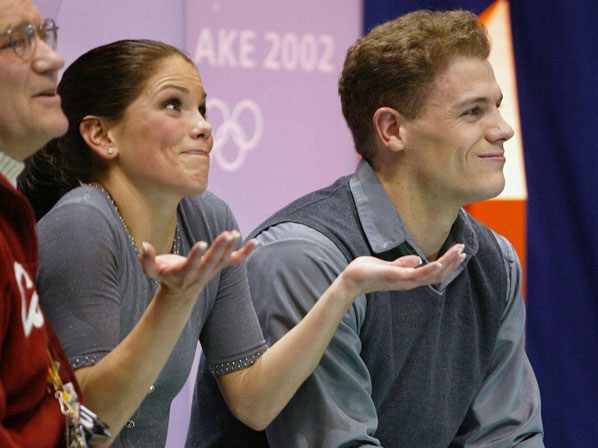After the conclusion of each semester, I always eagerly await my student course evaluations. I know many faculty that dislike student evaluations. I share the concerns about the overweighted importance that evaluations can sometimes hold over an instructor’s career. However, I also appreciate hearing from my students and trying to improve. In today’s post, I will share how to read student course evaluations to reflect upon and improve your teaching.

Student course evaluations may be like the oft-quoted Winston Churchill line, “democracy is the worst form of government, except for all those other forms that have been tried.”
I firmly believe that if you follow the five steps I describe below that you will find student course evaluations productive and useful for improving future classes.
1. Throw out the French judge.
Back in the 2002 Winter Olympics, Canadian figure skaters Jamie Sale and David Pelletier had seemingly won the gold medal. However, the French judge had been pressured to score the Russian team higher. Fortunately, Sale and Pelletier eventually received their gold medals after the scandal became public. When reading your course evaluations, there will almost always be a French judge whose scores simply should not trusted. This may be a student upset about their grade, the fact that they had to take your class because their advisor promised they could transfer a course in place of yours, or someone that doesn’t like your hair style. Whatever the reason, when you see one score that is such an outlier— ignore it. We all have an inclination to focus on the one negative comment and forget the 20 positive ones. Fight this tendency when reading your evaluations!
In fact, I argue that the best thing to do is throw out both your highest and lowest scores. You are never as great as those that think you walk on water. But, you are certainly also not as bad as those that wonder how you walk and chew gum at the same time.
2. Look for patterns.
The best use of student course evaluation data is to look for patterns. Individual classes or students may be peculiar. But, if you start to see patterns in your evaluations, you can reasonable assume that the trend is real and something to consider addressing.
For example, I used to get regular feedback from a small group of students asking that I lecture or “tell them” the information that they needed to know. Most of my classes are graduate seminars and I believe in conducting these classes in the Socratic method. Some students find this frustrating, which I understand. After seeing these comments, I was unwilling to change my approach as I strongly contend it improves their learning. Instead, I started explaining why we were conducting the seminar using the questions/answer format. Once the students started to understand my motivation, I nearly stopped receiving the feedback on my evaluations.
3. Look at longitudinal data.
This is hard for instructors first starting out, but I suggest looking at your student course evaluations longitudinally. I compare my results over time both in general and for specific classes. For instance, I know that the content in certain courses is not typically the favorite for students. This skews the scores down slightly. When reviewing the data for one of these courses, I consider the evaluations compared to data from the same course in the past. Looking at the scores over time helps with pattern recognition, but also identifies areas for improvement that don’t immediately stand out in an individual course’s results.
4. Seek a second opinion.
Sometimes, we just need a second opinion. I encourage you to reach out to a trusted colleague or to your campus teaching center. Many faculty take course evaluations personally and I think this is a good thing. However, this can impair our judgement. Seeking out another opinion on how to interpret evaluations can prove enormously helpful.
5. Use supplemental course evaluations.
I frequently use supplemental course evaluations that I may conduct in the middle or end of a class. Midcourse evaluations give me some baseline data that I can use to compare to my end of course evaluations. Moreover, I often want answers to specific questions that aren’t asked on the university-sponsored course evaluations. For example, I often ask students a couple of specific questions about texts used in class. This helps me judge if they are comprehending or struggling with the readings. When asking my own questions, I can get specific about a given reading in a way that the university course evaluations simply can’t.
Of course, there are other strategies and ways to review your evaluations. However, I think these are a great foundation for how to read student course evaluations.

